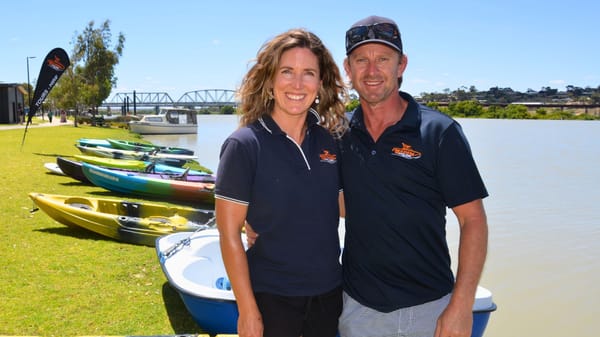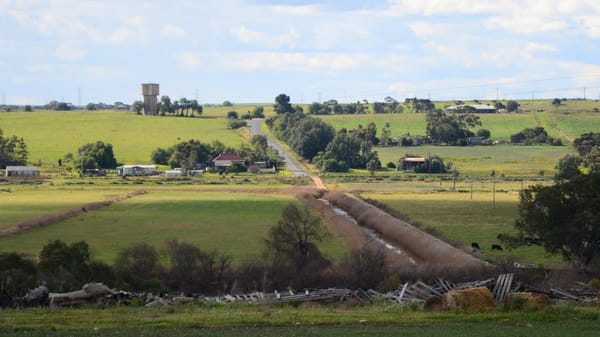Twelve months on, flood-affected River Murray farmers are still doing it tough
Retired agricultural advisor Dale Manson highlights the plight of primary producers at Long Flat and up and down the river.

Despite the general community having returned to a relaxed no-impact lifestyle following the River Murray flooding of late 2022 and early 2023, primary producers farming the previously inundated lowland flats continue to shoulder an enormous, yet hidden, burden.
The farming community of Long Flat is one that continues to shoulder the ongoing burden of repair and remediation from the flood.
The reopening of local playgrounds, parks and roadways has now largely whitewashed people’s memories of the flood disaster.
However, hidden from most people’s attention is the fact that for some members of the community, reliant on farming the lowland flats, the flooding of their enterprises remains a genuine long-lasting natural disaster equivalent to bushfire or earthquake.
Unfortunately, very few members of the community may be aware of the ongoing financial, physical and emotional legacy the earlier flooding still presents to affected farmers.

At the time of flooding, paddocks covered with deep water were quite obvious and somewhat of a tourist attraction for onlookers.
However in reality, because the paddocks were submerged under as much as three metres of water, they instantly became completely unusable for livestock grazing, hay production or cropping.
This meant the income earning capacity of the areas directly affected by the natural disaster suddenly stopped.
Every piece of pasture and crop vegetation covered with water was killed.
Requests by the farming community to the local council for remission of council rates levied on the flooded lowland flats made unproductive by the natural disaster fell on deaf ears.
The best that could be negotiated was a time-deferral of rate payment, meaning the unproductive land continued to accumulate financial charges imposed by the council.
This meant the primary producers were left with an enormous overhead cost for land that was unable to generate income for much of the year.

In addition to the total lack of income from vast areas of their properties, affected primary producers also faced a steep increase in unexpected costs to remedy the flood damage.
Vastly reduced income, coupled with greatly increased costs, continues to place enormous financial pressure on primary producers impacted by the natural disaster.
At the time of the flooding, livestock needed to be immediately removed from the lowland flats and sold for the prevailing market price, transported to expensive agistment some distance away or supplementary fed in highland areas.
Without additional hand-feeding with expensive fodder, the highland areas would not have been able to support livestock due to the prevailing summer-depleted feed conditions.
The highland paddocks that would normally have been used to produce stock feed or crops using mid-summer irrigation were also bare due to power supplies for the water pumps located on the inundated lowland farming areas being shut off.
Many pumps were also completely removed from the lowland paddocks to prevent water damage.
Some of the pumps that remained were unsalvageable after the flooding receded, including pumphouses that collapsed.
However, 12 months later, despite the lowland irrigation areas now looking green and water-free, there remain ongoing penalties for primary producers.
This can truly be described as a hidden tragedy, carrying enormous financial, physical and emotional burdens.

With every skerrick of pasture and crop destroyed by being submerged under three metres of flood water for many months, once the water receded and soil sufficiently firm to permit use of tractors, enormous physical effort and financial resources were put into reseeding all the paddocks.
However, one side benefit of the flooding was the depositing of fine silt over paddock surfaces increasing fertility, although the same silt produced significant issues for primary producers where it clogged essential drainage channels.
Due to the damaged government levee bank only being partially repaired, the River Murray overflowed the levee bank for a second time nine months after the initial inundation, once again flooding much of the reseeded area.
Not only did this unexpected second flooding of the paddocks destroy some of the reseeded pasture, it also meant livestock had to be urgently evacuated from the area.
One primary producer who was forced to muster and remove flocks of heavily pregnant ewes from the area flooded for a second time reported a terrible ongoing impact on their lambing percentage and survival of both ewes and lambs.

Despite realisations from the second river inundation, some areas of the state government-owned levee bank remain unrepaired, adding to the enormous stress of farming the lowland irrigation flats.
The question in many primary producers’ minds is whether they will have to face yet another river inundation due to failed levee banks, again destroying the repaired infrastructure and preventing them from farming the area.
An ongoing burden for primary producers who are currently flat out trying to produce an income from their rural enterprises is the costly repair of damaged fencing, water points, drainage channels, irrigation infrastructure, stock handling facilities, pasture and roadways remains.
The stress and worry of all this are taking a genuine toll on the affected primary produces and their families.
In realisation of this, the female farmers of impacted river flat areas have bonded together to create resilience and a positive forward-looking outlook.
Their mutual attitude is one of getting through the financial and physical hardships in order to reinstate normal family life and position their rural enterprises as effective contributors to the economy well into the future.
A lot of infrastructure remediation work remains to be done and the River Murray flats are still a long way from returning to the condition they were in prior to the flood natural disaster, however the primary industries sector and its people are true survivors.
- Get help: Join the women of the Lower Murray Reclaimed Irrigation Area for morning tea at the Monteith Hall from 9.30-11.30am next Tuesday, February 6.
- Read more: Department for Environment and Water failed farmers during floods, inquiry hears
- Read more: What’s happening with the Lower Murray’s levees? Not enough, opposition MPs say
- Read more: Blaze Aid are here to help with River Murray flood recovery
Stories create community. Help Murray Bridge News tell our community’s stories by subscribing today.





